In high school I thought it peculiar that Omaha’s Park Avenue, perceivably a street of once high standing, was so far removed from its namesake. I had assumed it aspired to New York City’s Park Avenue. Our Park Avenue ran north-south (still does), a short fourteen blocks from Ed Creighton Avenue on the southern border of Hanscom Park to its northern conclusion at Dodge. The rumored drug busts and overall seediness of little Park Ave., at least in junior and high school days, made it all the more interesting to teenagers—not that we were peddling by on a vintage tandem with our parasols but certainly worth a slow drive-through now and again to see what we could make out. Now I recognize that many of my observations are no longer true, owing to the passage of decades and the Park Avenue pendulum is now swinging in an upward movement. It was a lifetime ago and we were still in adolescence. We knew an older someone who lived in one of the historic corner, brick apartment buildings at Jackson and Park Avenue, and if his colorful exploits weren’t enough, our parents’ evening news warned of the decrepitude. More than its well-publicized disgrace, what really held my attention was the emotional palette of the area–the intriguing architectural mash-up of historic structures, their dense, tightly woven placement, a wide promenade of a street, slimmed down to one-way in portions and the chance to mingle with real people, as varied and adorned as the built environment. It was clearly not my Benson and I loved every small distraction. I was a self-proclaimed artist and there was a stirring sadness and grit in the frayed inverse of Park Avenue–the strange and murky backwards of New York’s iconic Waldorf-Astoria and their million dollar apartments that I was drawn to. I certainly wasn’t looking for Dark Blue Property Sets in those days but I was touched by the impression that Omaha’s Park Avenue had detectably seen tremendous social and economic changes. Who had ever seen so many Queen Anne and Romanesque towers, corbels and dentils, those detailed brick patterns and fish-scale shingles? Not I! Those charming duplexes, row houses, occasional brick streets, proud, formal apartment buildings, such prominent, historic places of worship, and mammoth single-family homes, many long ago cut-up into teetering apartment rentals, informed that this stretch was once a nobby drive.
Investigation at a Glance: Park Avenue’s revitalization is but a pendulum’s swing through time dating back to the 1880s. Prominent, disdained, ignored, adored and forever functional, the incredible, architecturally strong, long lived Park Avenue neighborhood has been able to absorb anything that comes along. This is a brief, personal remembrance from the mid 80s punk years. The 1980s, that is. With love.
- Historic photo of a real big girl at 1021 Park Avenue. Creator: Bostwick, Louis (1868-1943) and Frohardt, Homer (1885-1972). Publisher: The Durham Museum. Date: 1952. No longer extant.
- Perfect Neighbors. 531 Park Avenue, the light colored house on the left encapsulates so many elements of desire. The Assessor’s site logs it as constructed in 1892, but An Inventory of Historic Omaha Buildings lists it built in August of 1889 for the Griffith family. 533-535 Park Ave is a four-plex although it looks deceivingly like it could have been a duplex back in 1888. One of my all time favorites, for I love those sets of magnetic triangles. Architect J. Dietrick built this beauty for Mrs. Babcock.
- Historic photo displaying streetcar tracks at Park Avenue and Leavenworth Street, looking southwest at the Barnard Apartments, the Portland Apartments just to the south. Creator: Bostwick, Louis (1868-1943) and Frohardt, Homer (1885-1972). Publisher: The Durham Museum. Date: 1951. These apartments are now called the The Barnard Flats at 804 Park Avenue. Like its half-sister building, the Unitah across to the north, The Barnard also has doors on Park Avenue and Leavenworth Street.
- The Barnard Flats at 804 Park Avenue. Like its sister building, the Unitah across to the north, The Barnard also has doors on Park Avenue and Leavenworth Street. This is the front door that faces Leavenworth Street. This entryway was always an eyefull when you were stopped at the lights.
- Historic photo of the Uintah Apartments at 720 Park Avenue. This apartment building has formal south, east and west entrances with a private northern entrance for tenants. This appears to be the eastern door. Creator: Bostwick, Louis (1868-1943) and Frohardt, Homer (1885-1972). Publisher: The Durham Museum. Date: 1929.
- Current photo of the Uintah Apartments at 720 Park Avenue. Camera facing northwestern angle. Displays Leavenworth entry.
- Current photo of the Unitah Apartments at 720 Park Avenue. This is the Leavenworth Street entry. Back in the 1980s and 90s this stoop was filled with some real characters.
- Historic photo of 836, 840 and 842 Park Avenue, the Terrace Court Apartments. Built in 1920s Sulivanesque.
- Historic photo of the Thorvald Apartments at 1124 Park Ave. Creator: Bostwick, Louis (1868-1943) and Frohardt, Homer (1885-1972). Publisher: The Durham Museum. Date: 1915.
- Current photo of the Thorvald Apartments at Park Avenue and Harris Street. Now called the Meyer Apartments.
- Historic photo of 2961-2969 Pacific Street, built in 1890. I have had this photo in my collection for a long time. I am sorry that I don’t know who to credit for this one.
- Current photo of 2961-2969 Pacific are wonderful row houses built in 1890.
- Built in 1930, 2954 Harney (on the left) is the best sandwiched house around. The light colored apartment building at 2952 Harney, to the right, were constructed in 1902. Solid, hardworking buildings.
- 514 Park Avenue is a very cool house with an intriguing history–I just know it. She sits high up from the sidewalk. Apparently built in 1888 for the Meday family, Architect Mendlessohn & Co. registered the original home at a cost of $6000. Its shingle now reads “Park West.”
- Historic photo of 3005-3011 Pacific Street (with another entrance at 1102 South 30th Avenue) borrowed from the Omaha Landmarks site. From their website: “Year Built: 1890. Architect: Mendelssohn, Fisher & Lawrie. Builder: Unknown. Style: Queen Anne. Designated Omaha Landmark: : 4/21/1981. Hicks Terrace is historically related to prominent Omaha real estate broker and developer George N. Hicks who is credited with the development of the Hanscom Place neighborhood.”
- Current photo of 3005-3011 Pacific Street (with another entrance at 1102 South 30th Avenue) are pretty amazing. Built in 1890, they were originally called the George N. Hicks Terrace.
- The apartments our friend lived in while still in high school. Park Avenue and Jackson. Lots of news worthy activity here in the early to mid 80s. Such a beautiful place.
Just a sliver of the sampling of Park Avenue Beauties. I included historic photos where I could. Click on each image for more details.
I am not exactly sure what it was about Park Avenue, other than its beautiful, forlorn buildings, affordable rents, proximity to downtown and the interstate, but there was plenty of action along this corridor in the seventies and eighties and most of it, by mainstream Omaha’s standards, was up to no good. Seemingly an eye-opening quarter of sex workers, drug activity, disordering conduct, theft, graffiti, public drunkenness, knife fights and other fits of violence, I observed a concentration of artists, single mothers with kids, gay men, fancy ladies in pantyhose, punk rock kids and groups of single, old-age pensioners, as they were called then. I now know the neighborhood was a diverse medley, not unlike any once glorious, abandoned, older neighborhood in any city. And by abandoned, I mean evacuated for newer, higher ground with more breathing room–further out west. Yes, as my girlfriend Laura, who lived on Park Avenue remembered, there was an element of danger lingering about, but this close quarters awareness never bothered us in those days. Privacy was not one of Park Avenue’s mysterious qualities.
I didn’t know it back then, but Park Avenue was once the western most fringe of Omaha. With upscale Hanscom Park and the Hanscom Place neighborhood on the southern end to the massive homes of Redicks addition on the northern side, I would soon learn that 1880’s Park Avenue was an ideal development of its day. When questioned where one lived, owners and tenants surely exulted, “Park Avenue” with every bit the same flourish as a Park Avenue New Yorker. Its high-density mix of well-designed multi-family dwellings alongside mansions on the early streetcar line connected workers to downtown Omaha and likewise transported the rest of Omaha up to tranquil Hanscom Park. Some might say the neighborhood was in decline by the time a number of the large, older homes were torn down for the Housing Authority high-rise apartments in the mid-60s on the southeast corner of Park Avenue and Woolworth, bordering Hanscom Park. Some might suspicion it was the hundreds of homes and businesses razed for the clearing of Interstate 480 (Gerald Ford Freeway) along the eastern swath of 29th Street in the late 1950s-early 1960s that served to fracture Park Avenue from the city. Or was it a series of scandalous nightclubs that settled into the surroundings in the same period? Perhaps someone here could shed light on the Park Avenue district in the 1960s and 70s, for I believe the bad press stigma settled in that period.
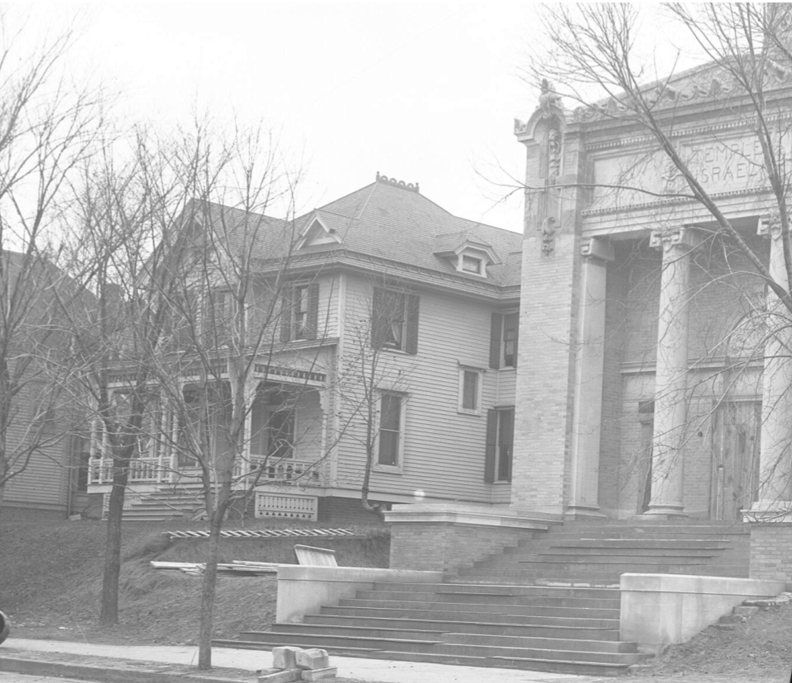
The original Temple Israel Synagogue is now home to St. John the Baptist Greek Orthodox Church, 602 Park Avenue. The two large homes seen to the south are non-extant but a good vision of what once lined Park Avenue. Creator: Bostwick, Louis (1868-1943) and Frohardt, Homer (1885-1972). Publisher: The Durham Museum. Date: 1908.
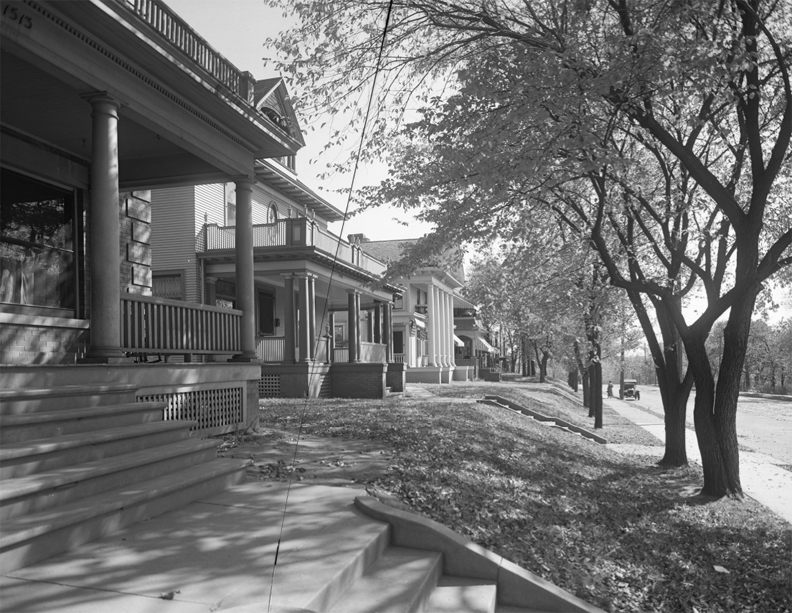
Historic photo of 1513 Park Avenue, east side of the street, facing Hanscom Park. The Real Lovelies. Creator: Frohardt, Homer (1885-1972). Publisher: The Durham Museum. Date: 1918. Non- extant–I believe torn down for the Park North Tower at 1501 Park Avenue and Park South Tower at 1601 Park Avenue.
By the time we were old enough to leave home in the mid to late 80s, some in our circle secured flats along Park Avenue and its side streets, to include parallel South 29th Street. Cycles of us concerted unofficial leases at the Georgia Row House at 1040 South 29th, although then called The Castle. These swift moves in the night suited our collective impulsive nature, our thrift store- wooden fruit-crate decor and creative economic arrangement. Where else in this town could we find functional, well proportioned apartments from the Gilded Age, Edwardian and Jazz Ages, as well as postwar styles within a few blocks? (I am happy to say most of the buildings of Park Ave and surrounding areas are still going strong!) The forsakenness of the surroundings only seemed to fuel our independence of spirit. We may have missed the Park Avenue glory years, but this was our time to live stylishly on a shoestring with bedroom fireplaces and secret closets the size of servants’ quarters. To know that some lonely, memorable character of the 1920s had stretched out or sighed loudly in the very room you occupied. Divine! Like a revival, I felt fortunate to cinch my first apartment in such a darkly, haunting building as The Castle, on the predictable edge of uncertainty, encircled by my chosen lot of the punk scene and strangers alike. (I know I’ve been saying this for five years, but I really do have an investigation solely on my beloved Georgia Row House.) This strange intermixing of neighbors and wanderers all treaded along the familiar sidewalks, struggled to parallel park boats for cars (if we had them to park), or ducked down alleys or between buildings to use the precarious, outdoor, backstairs. These practical alleys also supplied a good alternative route for avoiding the neighborhood “Scary Larrys,” a saying I stole from my dear girlfriend, Jude.
- Historic photo of the Georgia Row House borrowed from the Landmark Group. Built in 1890 as a row house, we always thought it was a single-family mansion. Scariest basement ever. I think the basements and boiler rooms of Park Avenue have to be some of the eeriest in town.
- How “The Castle” looked when we lived there with two large trees in the front yard. My bedroom was the upper most left window. 1040 South 29th Street.
- Snowy Castle at 1040 South 29th Street..
- How it has looked in recent years. Pretty Sad.
- L posing by the Nervous Eaters stickered fridge.
- Roommate M in our massive foyer complete with an astronomical black chandelier.
If you click on each image, you can enlarge and read the details.
At certain hours there were apparent meetings called in the front of lawns. I was never privy to these clubs but some elderly tenants of Park Ave, as we called it, customarily sat out on folding lawn chairs, having a cigarette or a can of beer in their assigned, flat, postage stamp plots. There were the occasional younger, wilder ones milling about in these informal garden parties under trees or in entry ways. Theirs was a strong leisurely community. This was back when men of a certain age wore the clothing of their distinct time and place, classically vintage from the 1950s to early 60s, or so it appeared. In memory they all seemed tucked in or donning a brimmed hat–not the vague, sporty, fast fashion of today. It emerged that public intoxication, in all forms of its clumsy glory, was a natural, consistent event on Park Avenue. To my 19-year-old eyes, I was passing kings and princes. The older fellows also made for the hideaway of the tiny but fascinating Park Avenue Bar on the triangle of St. Mary’s and Leavenworth (3011 St. Mary’s.) Through all of The Regulars’ set activities, the street wayfarers moseyed along, the big talkers worked out their acts, whether evangelists or hinky promoters, and a series of somewhat complicated one-way streets served to ensnare the occasional lookey-louer. I smile to think of this peculiar, architecturally strong neighborhood, able to absorb anything that came along.
- 1055-1059 Park Avenue, northeast corner of Park Ave and Pacific.
- The Bristol entrance as it looks today. Used to be called the Hanscom Apartments. 1029 Park Avenue. I always loved this stucco Spanish Colonial. Felt like California Cool to me. Now imagine older men milling about in suspenders and you’ll get the picture.
- The Hanscom Apartments at 1029 Park Ave, now called the Bristol Apartments. Creator: Bostwick, Louis (1868-1943) and Frohardt, Homer (1885-1972). Publisher: The Durham Musuem. Date: 1924.
- 64-unit Bristol Apartments at 1029 Park Ave, as it looks today.
- The Koley Apartments at 1317 Park Avenue. Please never remove letters from this building. The font!
These are the three buildings that I specifically remember the socializing and courtyard antics. There were probably many more but these were standouts. If you click on each image, you can enlarge and read the details.
I’ve probably mentioned before about walking up from The Castle and having to wait at the bus stop in front of the Walking Cane Club at 2909-2913 Leavenworth (years later revived as Sheri’s Nite Club). Fred’s Friendly 66 Service at 2901 Leavenworth always had a smile and offered a paternal sense of an anchor as I reached my bus stop. There I would endure the hoots and hollers of lonely passersby on those mornings. I had assumed the Cane was some kind of country western bar by the patronage and always loved the vintage neon walking cane cleverly in motion but maybe it was transitioning to a strip club by then? I learned quickly not to wear my micro minis with tights or any form of leopard print while positioned under that marquee. Unbeknownst to me, a My Omaha Obsession friend, Jay Rosen, worked right next door at Kohll’s Pharmacy at Park Ave and Leavenworth, delivering prescriptions years earlier. This was a drugstore we would commonly walk to at night for sodas and snacks. Although Jay was there most nights doing deliveries and restocking beer, I missed a chance encounter with him as he already moved to California by 1984. Jay recalled “a neighborhood patina and a lot of alcohol sales” in the Park Ave district but that he didn’t feel unsafe with the local proceedings. The Walking Cane Club building is now gone, as is the western most portion of the Kohll’s building. At least I remember Kohll’s being more on the corner of Park Avenue and Leavenworth? This empty lot now serves as parking but I think their proper drug store extended back then.
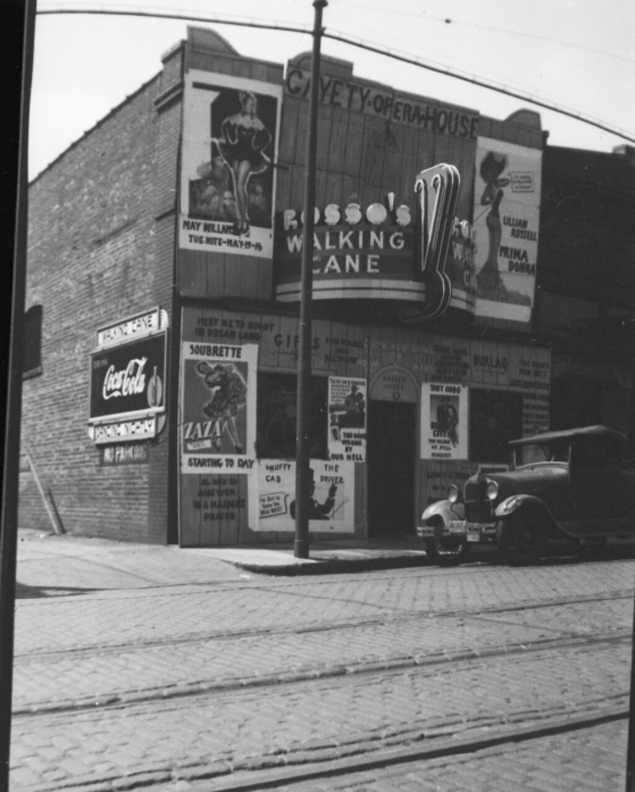
Rosso’s Walking Cane Tavern at 2913 Leavenworth Street in its early years. Creator: Bostwick, Louis (1868-1943) and Frohardt, Homer (1885-1972). Publisher: The Durham Museum. Date: 1939.
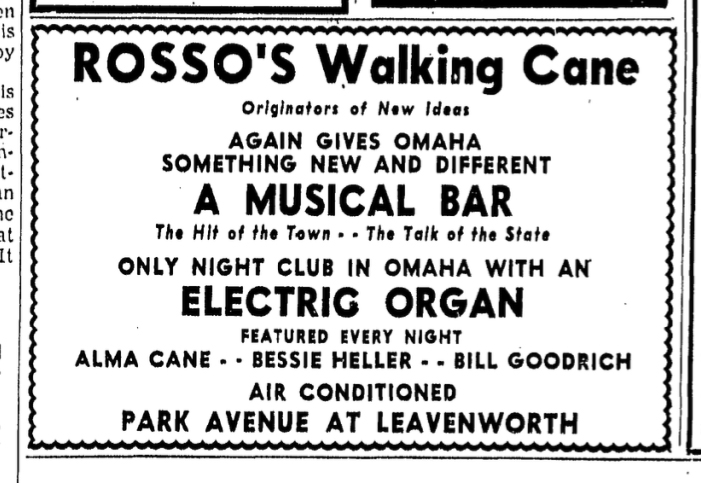
An early Walking Cane advertisement. “Only night club in Omaha with an electric organ.” 1940. OWH.
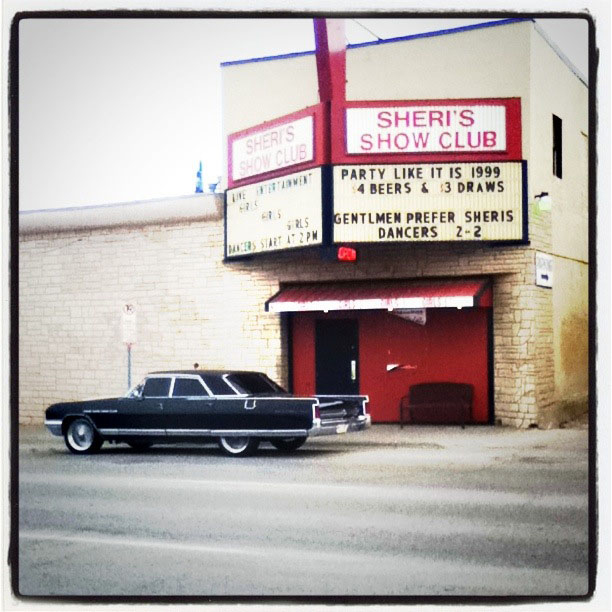
I did not take this incredible photo and would love to credit whoever did. This is how I remember the Walking Cane building looking back in 1987. You can see an addition to the eastern portion with a MCM stone facade. The neon walking cane sign was still functional—removed during the Sheri’s Show Club days. Love It.

How the 1948 Kohll’s Pharmacy stacks up today. Same cool building at 2915 Leavenworth (Leavenworth and Park Ave.) but with newer signage. Does anyone else remember the thrift store one door to the east of Kohll’s, same building? As I wrote earlier, I think the Kohll’s front door was one bay to the west, subsequently razed for more parking.
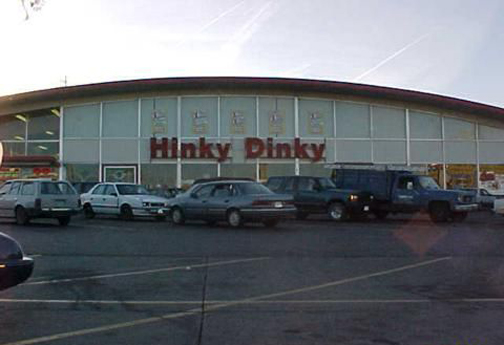
Jay’s casual perception of the neighborhood was exactly how we punks viewed it and all of these locales were conveniently reached on foot at any time of day without much concern. The old Safeway Supermarket, built in the early 1960s, across the street from the Walking Cane, at 2900 Leavenworth (now a Supermercado Nuestra Familia) is where we purchased our groceries–although I think it was a Shaver’s Food Mart back then. I had to look that one up, actually. The linoleum floor covered with cart-pressed lettuce and produce made a lasting impression as well as the tile mosaic out front. It would later become a Food Basket and by 1988 transition to Hinky Dinky. I didn’t live in town in those days. Hinky Dinky had sold by 2000.
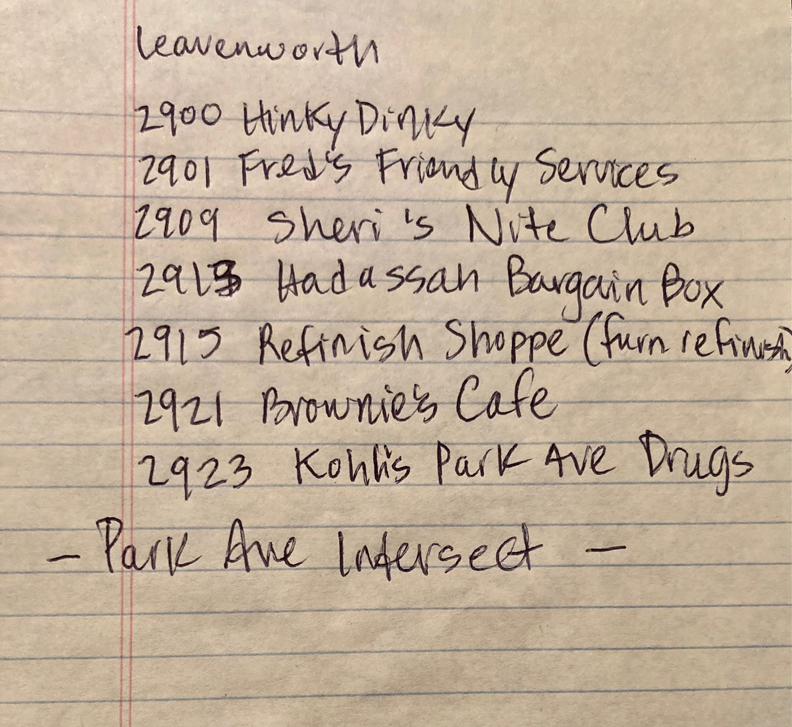
*Addendum of August 29, 2021. I just found this list in my Leavenworth file from 2017. Lord. I must have gone down to the library and looked up the Omaha City Directory from 1988.
My girlfriend, Diana rented at Park Avenue and Pacific along with her roomie friend. They lived in the gorgeous Normandie Apartments at 1102 Park Avenue. Diana fondly remembered the biker bar across the street from the Normandie. The girls would customarily “sit out on the roof and watch the bar fights.” Now doesn’t that sound like a good time? I was able to do a little digging and find that this neighborhood bar was none other than Andy’s Ark at 1101 Park Avenue. Still standing, although now appears to be a residence. Andy’s Ark Tavern was named for Andy Laux, who had owned this bar for 38 years, until his death from cancer in 1971. A Park Avenue neighborhood bar for 38 years! Imagine the history book Mr. Laux had been. RIP. From my search Andy’s Ark began having some problems in the late 70s, in the form of bar fights and, congruent with the times, occasional stabbings. But Andy’s Ark remained a thriving business and lively community throughout our time of living around Park Avenue—only later transitioning to Haecke’s Ark. Diana reminisced about one afternoon in the winter. “It had snowed a ton and my car got stuck in the front of the building. Three guys came over from the bar and pushed me out!!” Thank You Andy’s Ark Daytime Patrons, wherever you roam.
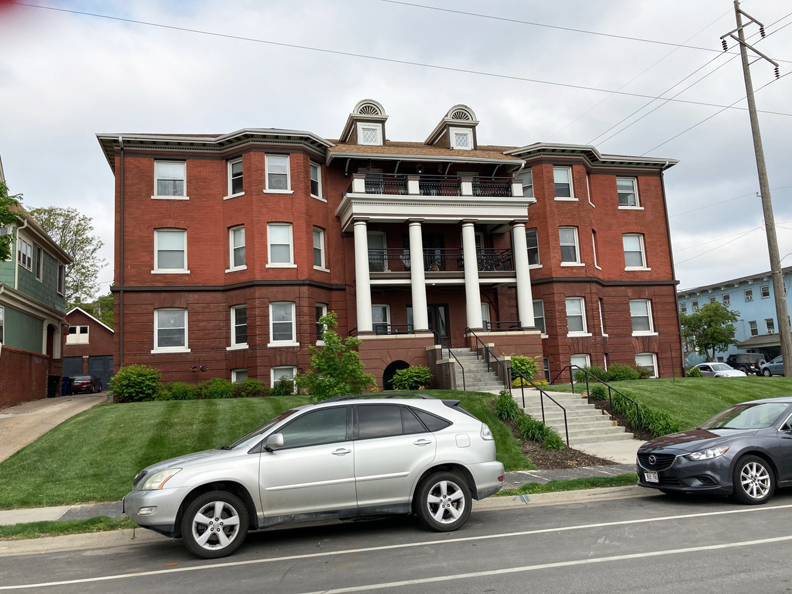
The beautiful Normandie, as she appears today. 1102 Park Avenue. Years later I would go to tour an open “garden level” apartment within but unfortunately it was nothing like Diana’s. I was so young–I didn’t know that meant the dank studio basement.

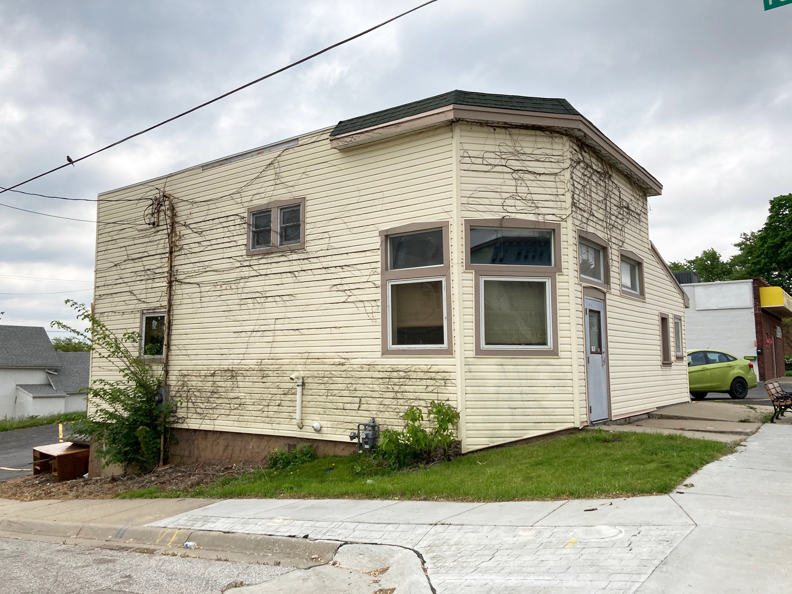
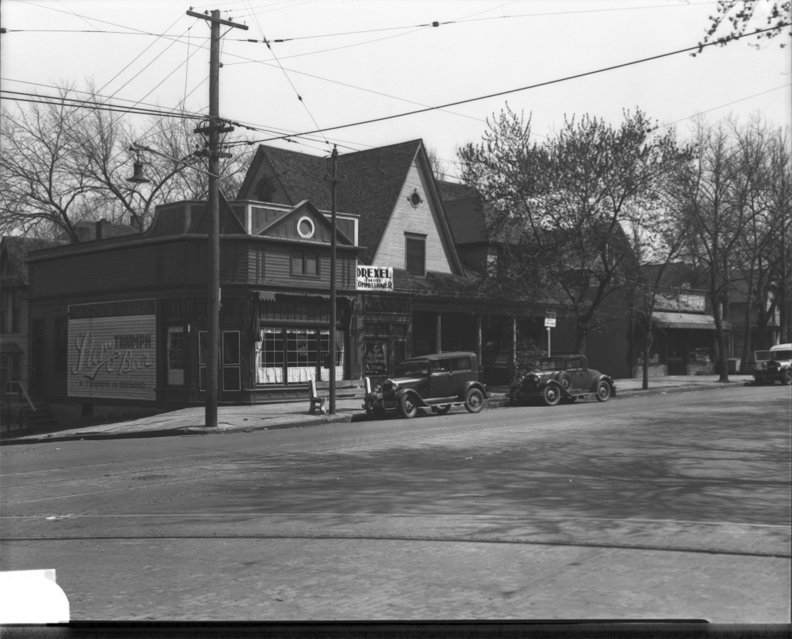
How the old Andy’s Ark, at 1101 Park Avenue, (southeast corner of Park Avenue and Pacific) looks today. I believe it is someone’s home or office. Goodness Gracious. Who knows what all has transpired between these hearty walls? The last image is the yummy one: Historic Andy’s Ark & Shoe Service on the corner of Park Ave and Pacific Street. Creator: Bostwick, Louis (1868-1943) and Frohardt, Homer (1885-1972). Publisher: The Durham Museum. Date: 1936.
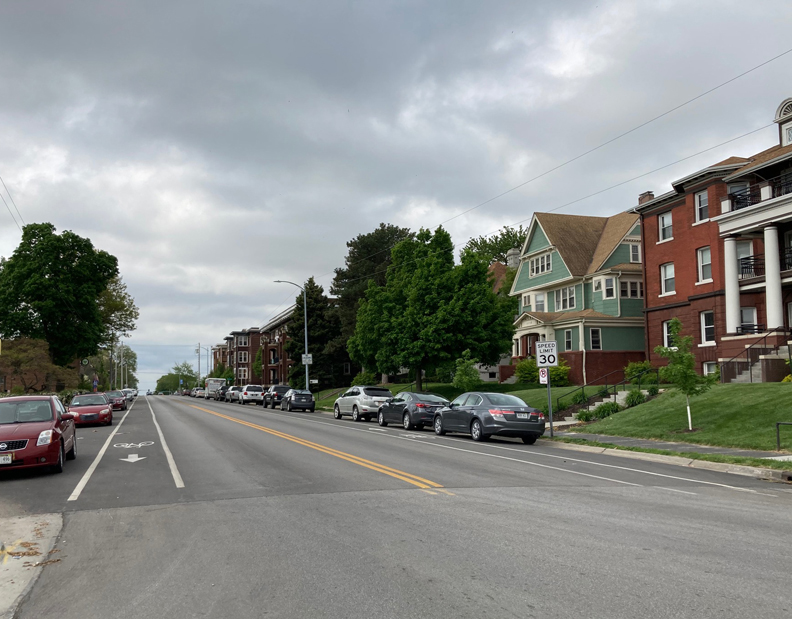
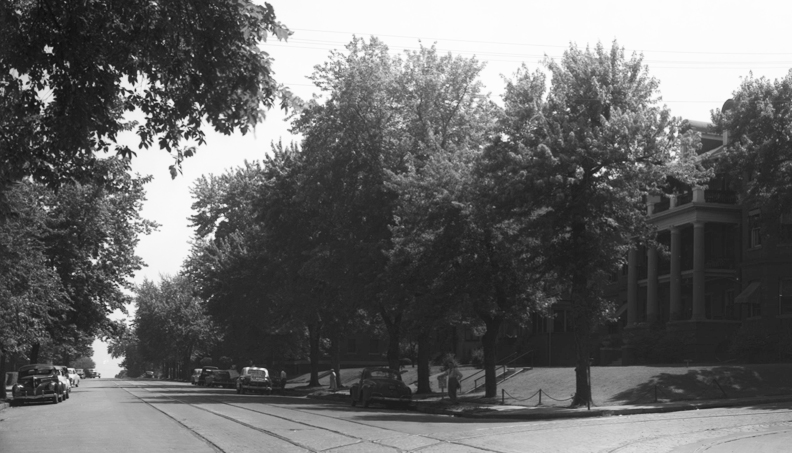
Looking south on Park Avenue from Pacific Street. Current 2021 and historic 1951 views. Normandie Apartments seen on the far right, with many great homes down the lane. Black and white depicts the streetcar tracks at Park Avenue and Pacific Street. The Normandie is enshrouded by trees. My father has assured me that every street was lined with trees back in the fifties. Creator: Bostwick, Louis (1868-1943) and Frohardt, Homer (1885-1972). Publisher: The Durham Museum. Date: 1951.
I now wonder if Park Avenue was simply named because it edged Hanscom Park, rather than a yearning for Manhattan’s Park Avenue? H. Ben Brick’s splendid contribution, The Streets of Omaha: Their Origins and Changes, offered that Park Avenue was long ago “officially changed to 29th Street, but due to popularity, retained its original name.” As a side note and only shared to deliciously complicate matters, 29th Street was once called Georgia Avenue, hence naming of the Georgia Row House. It was assigned in honor of Georgia Hanscom, daughter of Andrew Jackson Hanscom, who would later donate the 72 acres that became, you guessed it, Hanscom Park. It is interesting that 29th extends both north and south throughout Omaha but maintains the Park Avenue name in this distinct area.
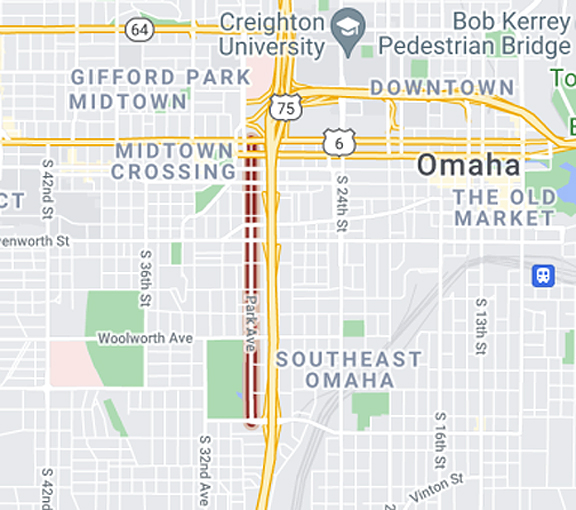
The long past, short-run of perfectly mysterious Park Avenue. Image borrowed from Google Maps.
Years Later
There used to be a large pale building on the southeast corner of Park Avenue and Dewey Avenue that I never particularly noticed but evidently viewed as backdrop to a larger, more colorful stage. Many of you will know exactly what I mean when I say this building was once home to Doctors Hospital. I had long since moved from the Park Avenue area and I cannot claim that I knew of the building’s history when I read of an apartment opening up in the early 1990s. (For those chomping at the bit, the structure is gone now and since replaced with SPACES, a titanic apartment complex.) But back then, the advertisement promised a rentee a health club membership, complete with indoor pool privileges. The Park Avenue Health Club and Apartments, it was called, at 501 Park Ave. It all sounded so prestigious, but knowing it was on Park Avenue made we wonder what kind of tricks it might have up its sleeve. I secured an appointment for a tour and when I arrived, the rental manager introduced me to a strange environ, the likes of which I had never seen before or since.

Old Park Ave advertisement found in the Omaha directory. “Luxury apartments and full service athletic club.” One can see how I was enticed by this marketing.
If you have gathered with us for a while you must know by now that I worship anything old–architecture with a history and soul. I embrace the peculiar. I have only ever lived in older buildings and I used to sign new leases every year so that I could experience all that Omaha had to offer by way of original tile and woodwork and plaster. I was accepting of many different styles, as long as they were from the 1940s back and I now know, I must have been drawn to the very flaws that others had seen as un-livable. I only offer this up so that you don’t assume I went charging into the old hospital building expecting a Regency Lakeside hi-rise. But I’m with friends and most of you already get this adoration of the past. When I arrived at the Park Avenue Apartments I was giddy to enter the building, because of its age and institutional-like formality. I do not remember the manager explaining its history but he must have mentioned it, right?
The first thing that comes to memory, as I think of it all of these years later, was the overpowering smell of chlorine and mildew—of musty wetness all around. Today I might have inquired about the odor but back then I was sweet and quiet and wouldn’t have known how to approach the unexpungeable stench. I recall we walked the hallways of what felt like an institution, an institution filled with all older, single males, superficially wandering or keying into doorways and briskly ducking inside. I felt so very uncomfortable in those halls. There was something terribly off. It seemed even the manager felt ill at ease with the proceedings and the inhabitants. The indoor swimming pool, from another time altogether, seemed to be centered lowly within the wings and offshoot halls, to recollection. I might be wrong on that account. A lifelong swimmer, the water and surrounding walls of this pool room did not give respite or call to me. In fact, I felt panicked and smothered in that large but shrinking room. This has always bothered me. Perhaps the ventilation was poor, I thought. Although I remember parts of the building being very interesting, the apartment offered me was on a lower level, in memory, and there were far too many things that felt trapped about the place. I slipped away quickly and continued my apartment search elsewhere.
Years later I would find out two of my friends had similar eerie, if not downright disturbing, experiences within this building. I will share those later in our investigation but while we are here…I am wondering if any of you lived at or found your way to the Park Avenue Health Club Apartments? Please email me your memories. We can keep your name anonymous, if that suits you.
Boys and girls, I realize I have really gone off coarse of our hospital investigation but this has been such a great trip down Park Avenue memory lane for me. Inspired by the festivities, I got out the Birthday Party and Gun Club records and really let myself dream of 1987. When we meet again, I will share my formal study and all research on the hospital at Park and Dewey Avenues…in our next chapter of Park Avenue and the Mysterious Hospital.
Long a Park Avenue devotee, a chance encounter with the Park Ave Health Club and Apartments in the early 1990s spurred my hunt to unravel the unusual origins of this strange building. Readers are given exclusive entry to the privately run Nicholas Senn Hospital. Follow along the twisting path to meet its founders and the story behind their Field Club mansion, a mysterious death, the mermaid nurses and daughters, the Doctors Hospital, lingering spirits, memories and Omaha lore.
This investigation now has a follow-up story. Follow this link for more: The Case of Park Avenue and the Mysterious Hospital.
I welcome your feedback and contributions to this Park Avenue investigation. Feel free to share thoughts and clues in “Comments.” I welcome you to poke around with your flashlight. Investigate. Hide in the shrubbery. Look under these rocks and down those alleyways. I am more than pleased to have you tiptoe about. By the time you head for home, I hope you have been fully Sherlocked and Satiated. Thank you, detective friends.

If you like what you see, you can keep up with my latest investigations by joining my email group. Click on “Contact” then look for “Sign me up for the Newsletter!” Enter your email address. It will then display “Thank you, your sign-up request was successful!” Make sure to check your email address to confirm. You will get sent email updates every time I have written a new article. Also feel free to join My Omaha Obsession on Facebook.
© Miss Cassette and myomahaobsession, 2021. Unauthorized use and/or duplication of this material without express and written permission from this site’s author and/or owner is strictly prohibited. Excerpts and links may be used, provided that full and clear credit is given to Miss Cassette and myomahaobsession with appropriate and specific direction to the original content.
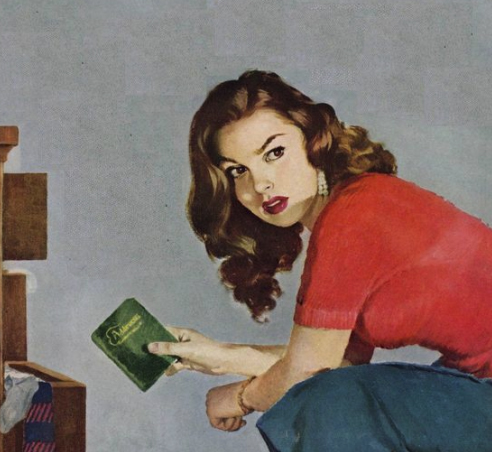
If you are looking for more architectural and Omaha history sleuthing fun, ask your local or big box bookseller for my new book: My Omaha Obsession: Searching for the City. You can also order it through this website. Thank you.

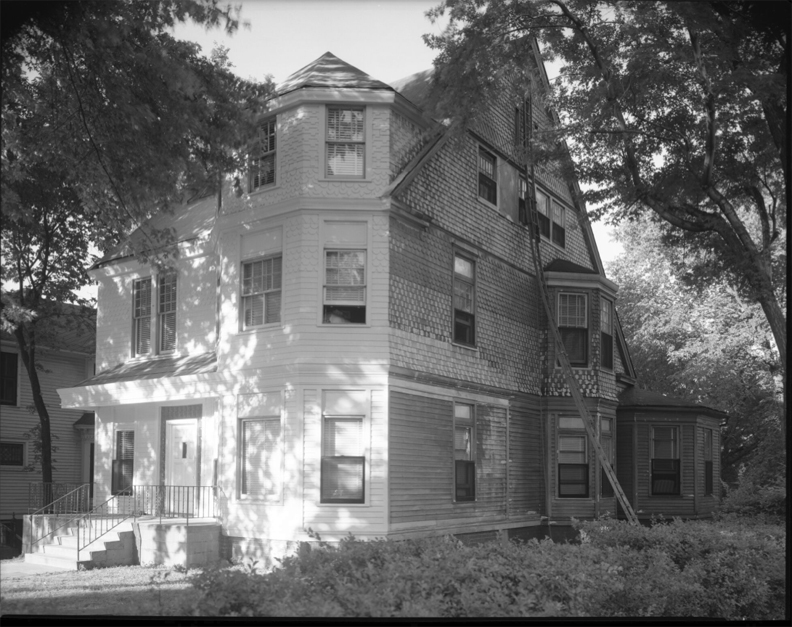
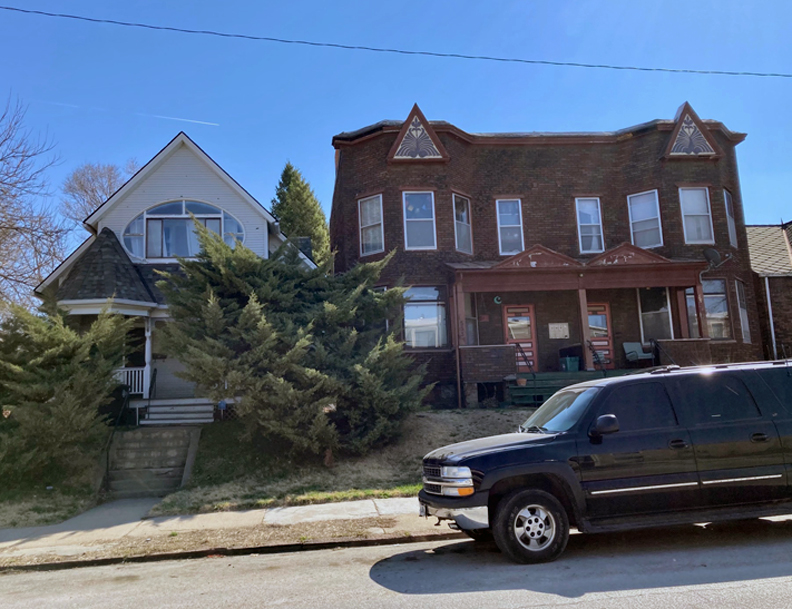

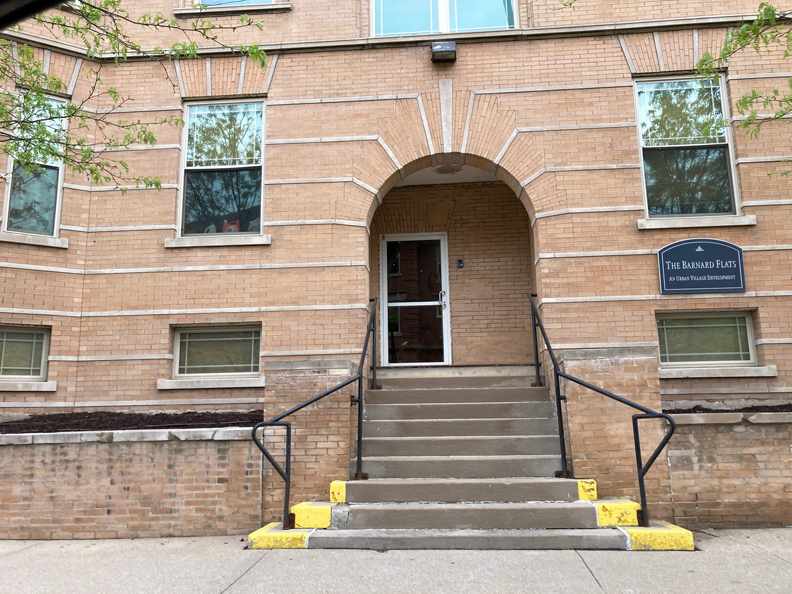
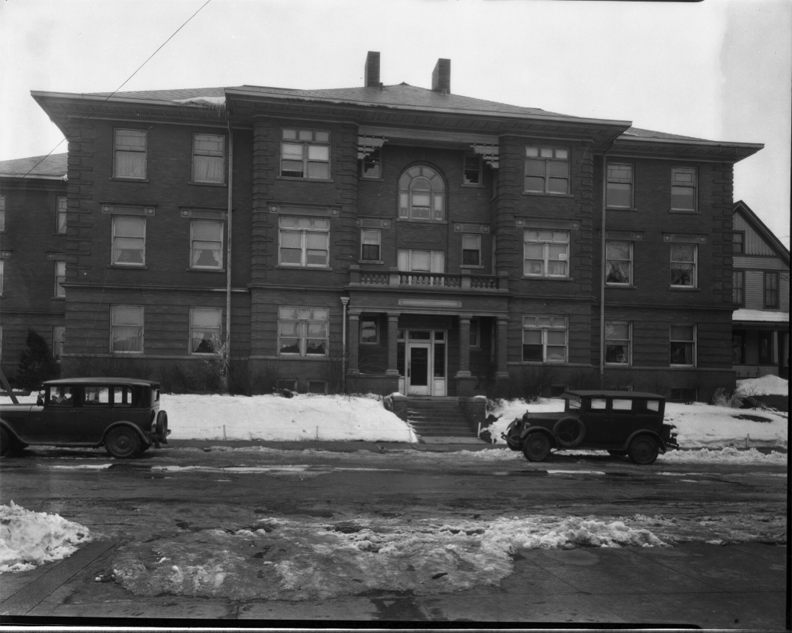
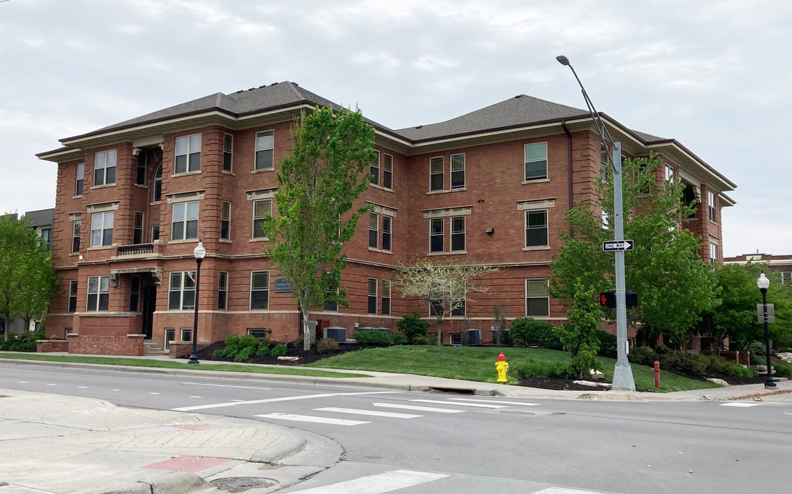

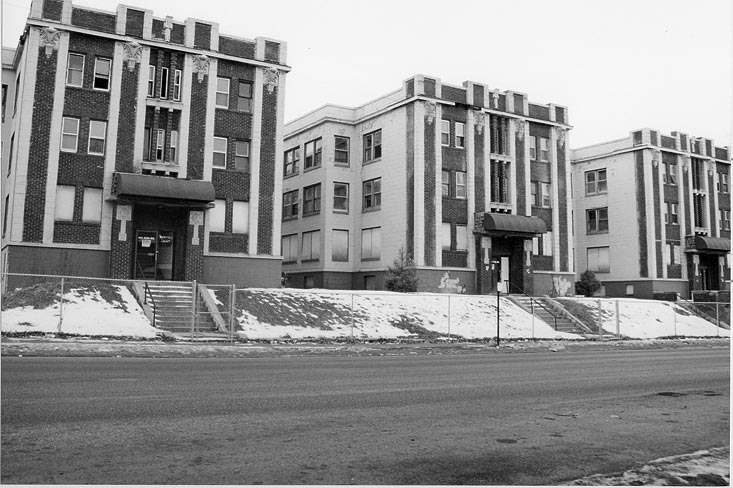
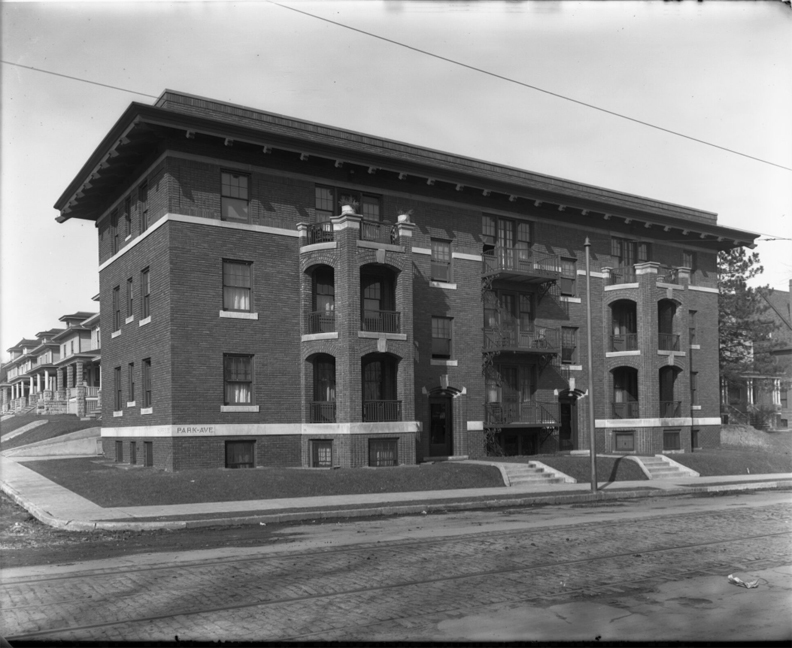
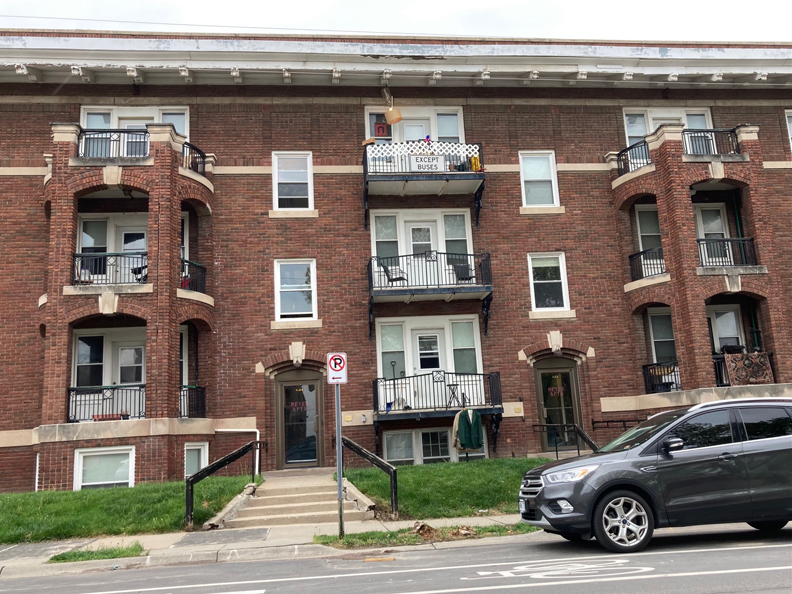

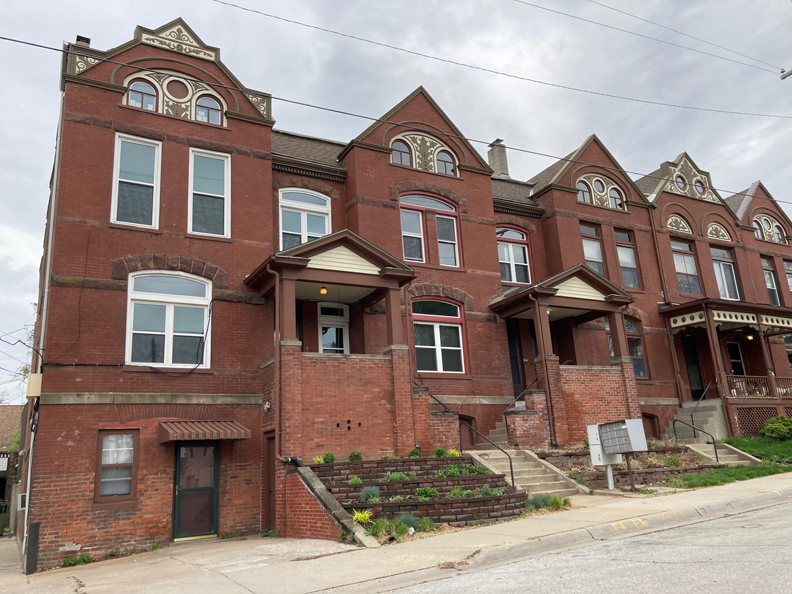

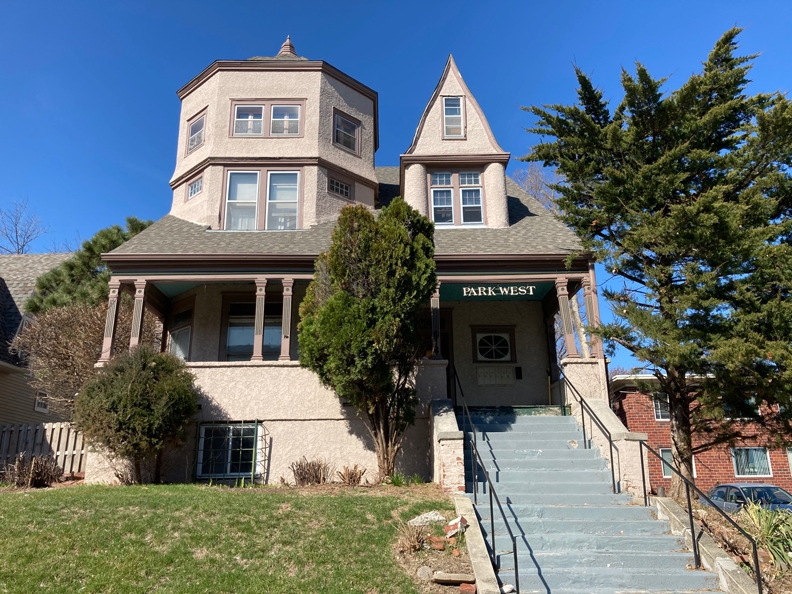
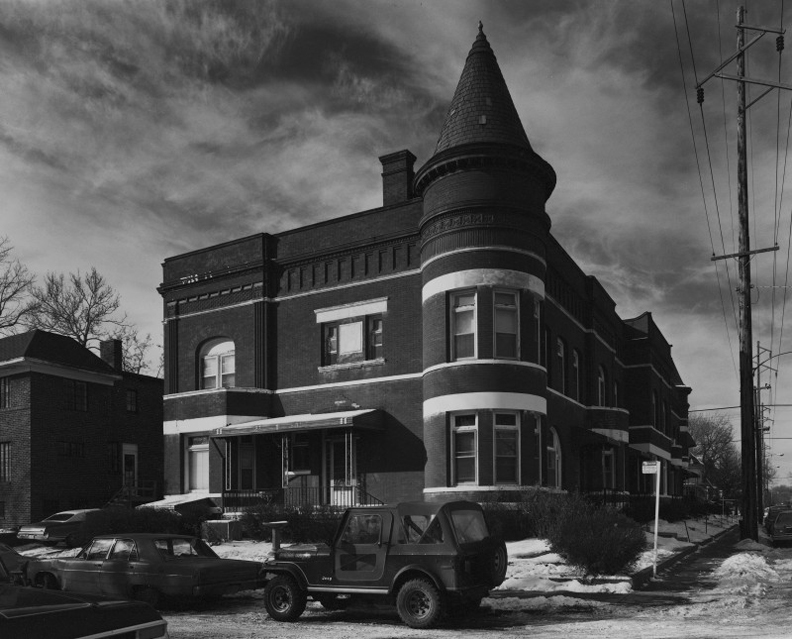

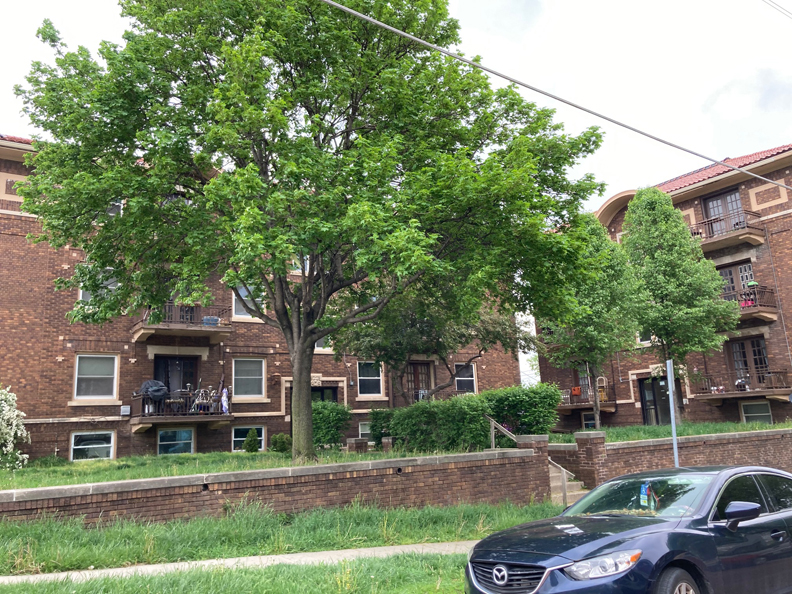
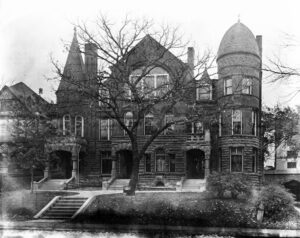

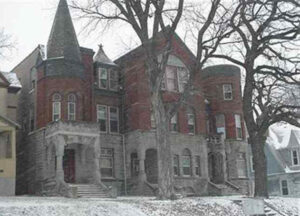

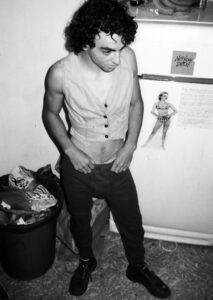
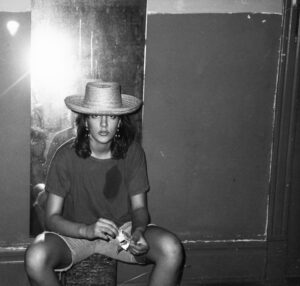
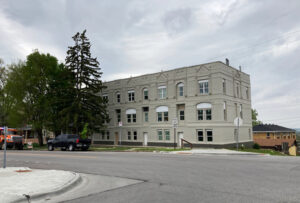
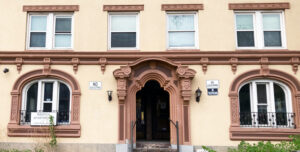
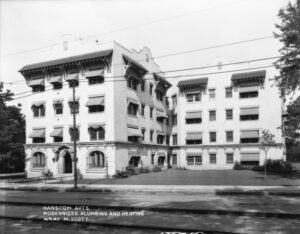
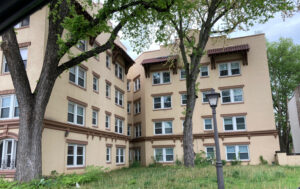
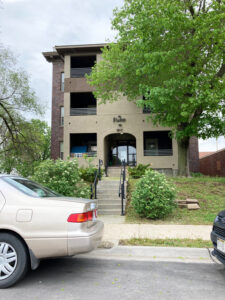
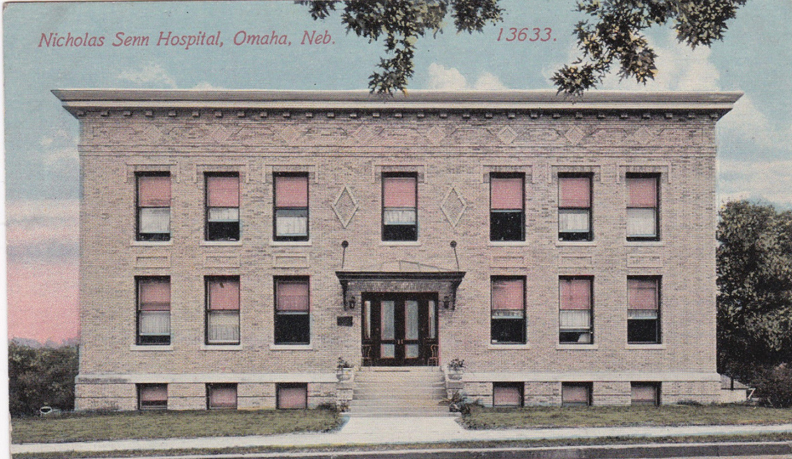
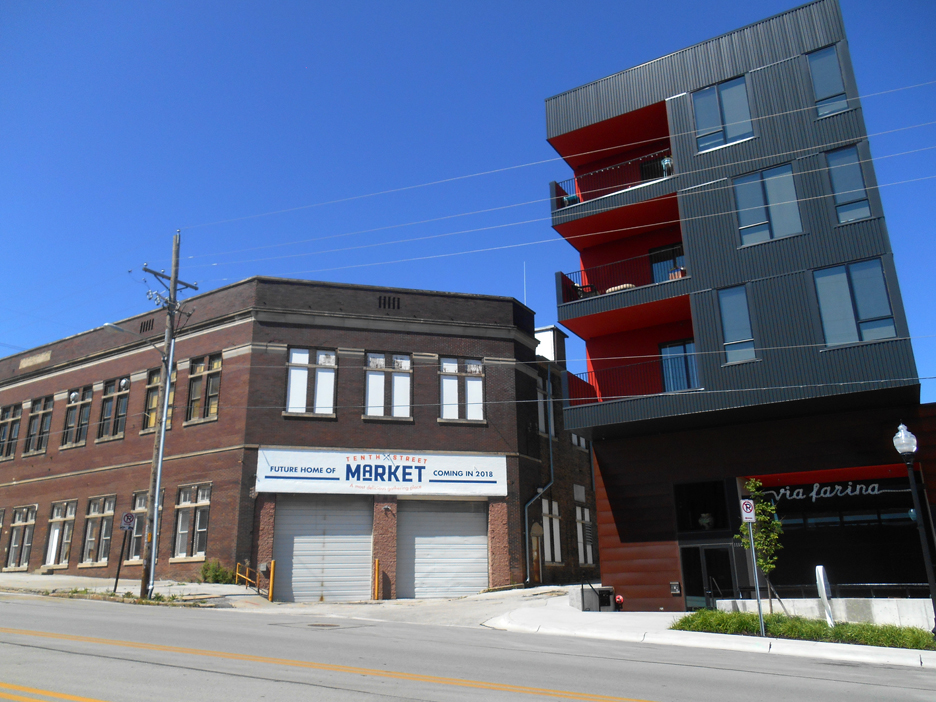
Anything on Boothe Memorial Hospital. In Omaha. Unwed mothers
This reply is a little late…my cousin was born at Booth in 1959. My last encounter with Booth was paying my tuition bill for UNMC at that building. It may not be used for the same purpose now, but the way UNMC is gobbling up real estate, I would say they are either still using Booth or have demolished it to build something else.
I was born in Doctors Hospital in 1967.
My grandfather , Dr. Adolph Srb, was a surgeon at Doctors Hospital and delivered many babies there. His practice was in the lower level of their home on 16th street
We lived at 1506 & 1512 S 29th street between 89-94. I’ve always wondered what the towers replaced – thanks for that picture! What a lovely piece of trivia to find out it was once called Georgia Ave.
Thank you Julie. When I was working on the story I looked up the city’s aerial photos before the towers were built. Then I started counting how many houses were torn down for the interstate! I can’t imagine what those little neighborhoods and blocks were like. The officials said these were “blighted” areas but I no longer trust that term.
Miss Cassette, I grew up on 31st & Pacific when the family moved there in 1966. We had lived in the apartment building called Rosewell Court at 1036 S 31 Street, and these were more townhome type than apartment. It was rumored that at one time, Boys Town had owned that property.
Anyway, I do remember the Doctors Hospital as a neighbor two doors down worked as a nurse there. She worked the overnight shift and always walked to and from work as it was not terribly far.
Kohll’s drugstore was on the southeast corner of Park Avenue but back then, it was a very small drugstore. There was a business directly south and behind the store, albeit it was attached. Kohll’s eventually expanded their store into that space at some point. Even further to the south was an autobody shop, DeLuxe Auto Body as I recall. At some point, that building caught fire and was razed. It became a parking lot for Kohll’s and the other businesses to the east. Next to Kohll’s was the Sharon Grill, then next to it, the second hand furniture. Kohll’s did eventually take over the whole building and razed their original store on the corner. Even further south was the Razors Edge barbershop.
As I recall, Safeway was built in 1962. They had a tile mosaic on the front of the store between the grocery store and Skaggs drug store with that date. Safeway and Skaggs always seemed to be paired together. The store was always a Safeway until they left town. Then Hinky Dinky took that spot until they went out of business. From there, that spot changed hands a few times.
West of Leavenworth & Park Avenue a block or so was The Gaslamp restaurant on the north side. I worked there as a busboy in the early 70’s. I got to meet Marlen Perkins of Mutual of Omaha’s Wild Kingdom fame when he stopped into town on the Freedom Train. Barnes drive in restaurant was on the south side directly across from the Gaslamp. When it closed, it became a bingo hall, and at last look it is now just an empty lot. To the west of the Gaslamp was the King Koin laundry mat.
South of Andy’s Ark was a small grocery store called Spartan. There was also a small grocery store down 31st Street that my mother would send me to get bread. It is just an empty lot, and has been for decades.
I love your posts, and I did buy your book. Keep up the sleuthing!!
As an aside, would you consider doing a work on the history of the Omaha drive in theaters?
Bob
This is amazing!!! Thank you. Have majorly added to the visuals of the times and I only want to know more. I remember that bingo hall! Then it turned into like a boot store or factory? You have blown my mind with the freedom train mention. It was such a big deal when I was a little girl. Or I should say it was a big deal to everyone.
Our daughter was born at Doctor’s Hospital in 1969.
I lived at the Bristol in ’86/’87. and at the Georgia Row House in ’88/’89 with Jude’s cousin Tonya, and was an old friend of Lari Loves’ as well……who are you, Ms, Cassette?
Thank you for this delicious bit of time travel! I have very fond memories of the townhouses in the 2900 block of Pacific Street (as well as some of the other area buildings depicted). Known as “Pacific Flats” when built, these houses had (and hopefully still retain) surprisingly nice interiors — much of which survived relatively unscathed as late as the 1970’s (despite the earlier conversion of several of them into apartments). The interior woodwork was consistently nice and the species of wood varied from room to room in the more visible spaces. The doors (most of which had transoms) reflected this change and might be birdseye maple on one side but oak on the other! The door hardware was exquisite cast brass… an exotic pattern of the 1880’s. The attics were fascinating, as were the basements… as a teen I made discoveries in some of them. Sigh. Now I’ll have to go dig for old photos and artifacts…
Hi there! This is divine. Did you know people who lived there or were they abandoned at the time? Were you on an adventure? Thanks for sharing.
I had the pleasure of doing interior maintenance in three of the houses for a few years in the late 70’s, learning a lot about the row and its history in the process. The entire neighborhood is fascinating!
In the late 60s, my grandmother lived in one of the two big public housing apartment buildings on Park Avenue, which were new at the time. I remember my sister and I would sometimes stay in her apartment with her when our parents would go away for the weekend to a church function. She would take us on the bus downtown (she did not drive a car) and we would see a movie at the Astro or Orpheum theater, and go shopping at Brandeis. I also remember her taking us to a neighborhood grocery store that was in the Park Avenue area. It was a small, old-fashioned grocery store, not a supermarket. This article brings back memories for me.
Hi Christine,
I am wondering about something. I read a brief passage that led me to believe that those two towers were originally for older people in Omaha. Does that match up with your memories of visiting your grandmother? I realize that when we are little we think everyone looks old but did it seem like it was a retirement community? Thank you for Reminiscing. Miss Cassette
Thanks for a memory walk down Park Avenue. For many years I’ve admired the “castle” at 1040 S 29th. If I had the money I would love to fix it up and keep it because it is so unique. It would probably cost a fortune but what a beautiful building it could be, either as a home or duplex.
Yesterday I was driving down 38th street north of Dodge. There are 6-7 absolutely beautiful very large homes on the west side of the street. I would love to tour some of those because they are very big, some 4 story, including the basement
Miss Cassette, I was born at Doctors and later worked there until the closed maybe 1970.
It smelled like a hospital.
I didn’t see or know of a pool. Perhaps because it was owned and operated by doctors there was an athletic club for themselves.
Thinking back it could have been under the wing to the north.
There was a business school on Park Avenue around Pacific Street. My cousin from out of town lived with us while attending school there. I think she learned shorthand and typing and whatever good secretaries learn.
I hope you this useful and thanks for the memories.
Hello Aubra–thanks for writing in. I will have to dig into that business school–I haven’t found it so far. I like to think on all of those businesses long there. How cool. On the next chapter, I will definitely need your feedback on some hospital questions that have gotten stirred up. Just trying to get it all in order. I hope you like it. I have heard from so many who were born there. Amazing to think. Miss Cassette
OMG, I can’t believe I found such a rich source of information on that block of Park Avenue! I lived at the Sinos apartments from 1991-93 (1122 Park), the bottom right balcony, so I had a front-row seat to Haecke’s Ark every night when it let out. Some nights it really seemed like a scene from a zombie flick with all the people staggering around at closing time. There were fights between guys, fights between couples, and fights between women; it was a real tableau vivant of human conflict in all its glorious permutations. That place made some lucky meth dealer very rich, I’m sure.
There was also a barbershop, iirc, where there’s now a restaurant. I only went there once, but it was a trip. Super old-school, and the owner was like a super foul-mouthed Floyd the barber from Andy Griffith.
Thanks so much for such an interesting and well-written article. It was literally the only hit that came up on Google when I searched for Haecke’s Ark out of curiosity after not having thought about it for years.
To Frank: I also lived in the area you mentioned, 115 N. 38th Ave just a few houses up from Dodge. It’s a beautiful area.
Just found your website by accident, which is why I’m a little late to the party. The Thrift store that used to be by Kohl’s I believe it was called Hadassah and I think it was affiliated with Temple Israel. As an antique dealer many years ago, I used to stop by there on my “downtown search route”.
Also enjoyed the 36th Leavenworth house story. Owned a Victorian Queen Anne on 36th and Howard.(formerly called Half-Howard since the west side of 36th street was the beginning of the “poor farm”. When it was closed down, that whole area became part of the Gold Coast.)
At one point, there were plans to have water ways and lakes with boulevards for driving/touring. It would start at Riverview park, then head to Hanscom Park, Turner Park, Dewey, etc. and would end up all the way into north Omaha – Fontenelle, Minnielusa, etc. At some point in time, most of it was filled in, but remnants can still be seen and found in old pictures and Post Cards – I probably have some.
Will be subscribing to your Email list.
Sincerely,
John Sullivan
Hi John, Great to hear from you! Hadassah thrift….I think that was it. Thanks! I found the Half-Howard connection when working on Chapter Two of this story. They say Dewey Avenue was originally called Half-Howard.I love the connection you made of the boulevard system. Please feel free to comment and share anything. I welcome you. Miss Cassette
John Sullivan: That’s interesting that you were an antique dealer. Did you ever run into a guy named David Shaw, had a shop in the Old Market? I was friends with him and some of that crowd in the late 80s/early 90s.
Might know him by sight. I closed my shop in 1988, since my ultimate goal was to own a Queen Anne house to put all my antiques in (I was a very selfish dealer, kept all the really good stuff 🙂 Found one on 36th and Howard and began restoration. Know a lot about that area. I loaned Landmarks a 1908 Parade of Homes from the Omaha Bee that I had. I suggested that they use the newspaper pictures as a “before” and then take pictures of what is there currently. Yielded some interesting results as it might relate to your 36th and Leavenworth story. Some houses “looked” like they had been torn down and replaced in the 1920’s, but upon closer inspection you could still see elements of the original. I think that’s what happened to the Leavenworth house – it got a new exterior overhaul.
My former house on 36th and Howard was only “modernized”. The gorgeous wrap around porch became wrought iron 🙁 One of my customers, upon seeing my Queen Anne, wanted one for herself and found one in Plattsmouth. She didn’t have any antique furniture to speak of, and new little about restoration so she decided the best approach was to marry me. Since her house was twice as big as mine – 8000 sq ft – we moved down there and I had to start all over with rewiring, re-plumbing, and major demolition. Since the daily drive at that time was an hour one way (no interstate yet) it was hard to find enough time to make progress, so I closed my shop and worked on our house full time. It’s finally coming to fruition 🙂 (Guess her plan worked 🙂
Probably have a number of things (pictures, postcards) that might help regarding old Omaha. Would be happy to share.
Hey, John. For some reason I missed your reply when you posted it. If you ever post any of your pictures and postcards online, please let me know!
I was born in Doctors Hospital as well. One set of my grandparents lived in the Park Towers. At that time it was only for senior
citizens.
I also remember that little grocery store as well. We used to walk down there with my grandpa to get candy.
My grandparents and great grandparents owned the Terrace Court Apartments throughout the 1940’s 50’s 60;s and into the 70’s. I, as a Real Estate Property Manger eventually managed them, together with a number of other properties in the area, some extant and others long gone. The old grocery store referred to in one of the comments above was in a one story structure immediately to the north of the 836 building, along with a service/station garage with indoor facilities for repairing autos. Incidentally, the 836 building was known as the Adelphia Hotel, a residential hotel with mostly senior or single working people. My grandmother would sit in the small office on the first floor, greeting all by name and collecting the rent when necessary. She was the daughter of A.C. Busk, an early contractor and brickyard owner. His company transitioned in 1940 or 41 to the Lueder Construction Company, still active and in existence today
I lived on 31st Street for several years – in a building across from First Lutheran Church – that had been moved from the Gerald Ford Birthplace, at 32nd and Woolworth. My dad knew the guy who was developing the Ford birthplace park, and said it would be a shame to demolish such a nice little building (total of 4 units, although it was originally a duplex). So he was basically given the house for the cost of paying to have it moved to a new lot, etc.
I was earning rockbottom wages at the time, so my parents gave me a massive break on rent in return for looking after the building, cleaning the laundry area, mowing, etc. I loved that place, although at the time the area was a bit sketchy (latter half of the 90s) – I had a peeper for a bit, and some guy tried to force my door one winter night. That sort of thing. one of my neighbors danced at Sheri’s Show Club, and I went there for drinks with her on a couple of nights when she wasn’t working.
I so remember the Park Ave apartments… my dad told me about its history as a hospital. I remember picking up a friend there one night at that funky smell was definitely… not pleasant.